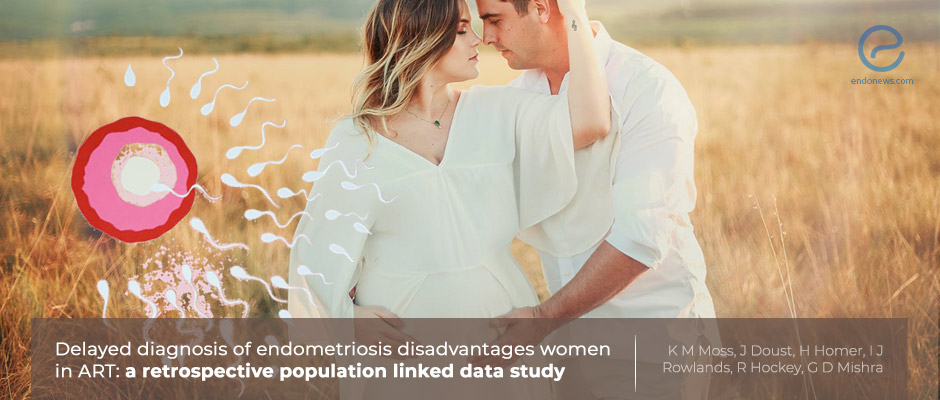Assisted Reproductive Technology Outcomes in Women with and without Endometriosis
Nov 10, 2021
Delayed diagnosis of endometriosis is a disadvantage for ART success.
Key Points
Highlights:
- Assisted Reproductive Technology (ART) use and its outcomes are NOT different for women with and without endometriosis as long as the endometriosis is diagnosed before starting ART.
Importance:
- Delayed diagnosis of endometriosis is a disadvantage in terms of ART success.
What's done here:
- The retrospective national cohort study investigates the differences in ART use and its outcomes in women with or without endometriosis in an Australian cohort (Women's Health Australia=ALSWH).
- Linked data on endometriosis, Assisted Reproduction, and birth information were also used.
- Age at the start for ART, the usage and type of technology (In vitro fertilization, intrauterine Insemination, or both), and birth after the first ART were evaluated.
Key Results:
- Among 13.508 participants in the cohort, 1322 patients underwent at least one cycle of ART, of which one-third (n=459) had endometriosis.
- Two-third of patients with endometriosis were diagnosed before the first ART.
- The results of outcomes revealed that women who had endometriosis diagnosed before the first ART were statistically similar to those without endometriosis.
- When the endometriosis diagnosis was later than the start of ART, the probability of the use of Intrauterine Insemination and the necessity for application of more than 10 ART cycles were higher.
- In the above group of patients, the likelihood of a birth report is less, even though the starting age of ART is the same.
Limitations:
- The severity of endometriosis, the reasons for using ART treatment, and the absence of the reliable linkage of births with ART treatment.
- Also, the probability of the presence of endometriosis in the no-endometriosis group can not be denied.
Lay Summary
Endometriosis causes infertility in one-third of patients, while in approximately 25-35% of infertile women, the cause is endometriosis.
The primary interest and the question of Moss et al. from the University of Queensland, Brisbane, Australia was "the differences in the use and the success rate of assisted reproductive technology(ART) in women with or without endometriosis" while planning this interesting retrospective cohort study. The authors used the data of the Australian Longitudinal Study on Women's Health (ALSWH). The linked data on endometriosis, Assisted Reproduction, and birth information was also used. The patient's age at the start for ART, the type of technology being either In vitro fertilization, intrauterine Insemination, or both, and birth after the first ART were evaluated.
Among 13.508 participants with consent in the cohort, 1322 patients underwent at least one cycle of ART, of which 459 had endometriosis. Women who were diagnosed before the start of ART comprised two-third of the endometriotic group and were 5 years younger on average than the others. They had the highest prevalence of endometriotic symptoms when compared to those whose diagnosis was delayed.
The results revealed no significant differences in any outcome variable when compared to women who have been diagnosed with endometriosis before ART and women without endometriosis. However, in women diagnosed with endometriosis after their first ART, the probability of the use of Intrauterine Insemination and the necessity for application of more than 10 ART cycles were high, and there were fewer reports of birth after infertility treatment. These findings suggested undiagnosed endometriosis before ART creates a success problem for ART."
" These findings support previous studies that have found no difference in the outcome of ART for women with endometriosis but add the new insight that this is only true if endometriosis is diagnosed prior to commencing ART.....For older women time is important and delays in starting IVF can reduce the chance of live birth" concluded authors, in their recently published study in "Human Reproduction".
Research Source: https://pubmed.ncbi.nlm.nih.gov/34610108/
Asisted Reproductive Techniques IVF infertility endometriosis intrauterine insemination IUI

